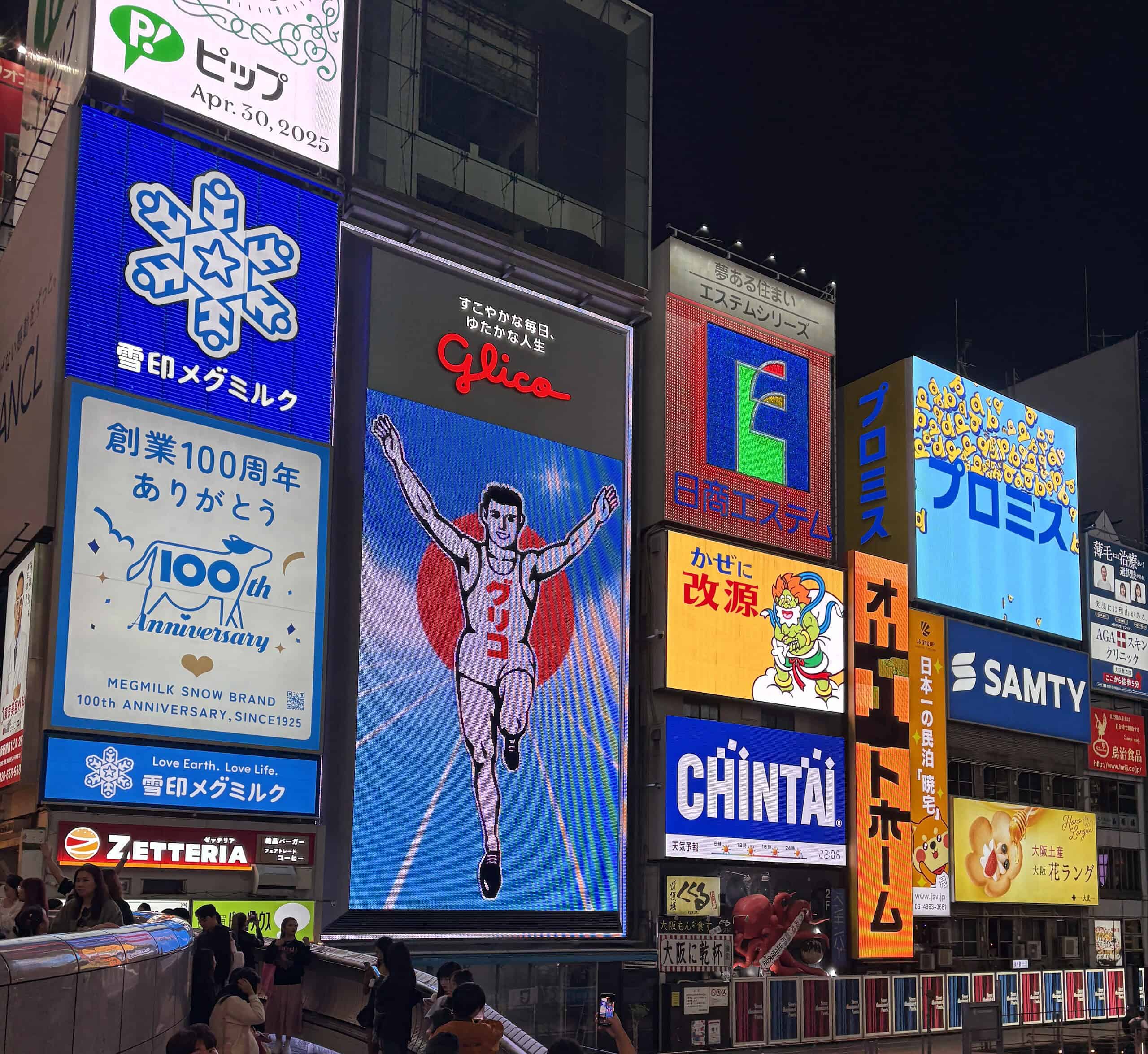4 Days in Osaka: Ultimate First Timer Itinerary
If this is your first time in Osaka, you’re in for a chaotic, delicious, slightly weird ride, and I mean that in the best way.
While Tokyo might have the flash and Kyoto the finesse, Osaka is where Japan lets loose. It’s a city that thrives on street food, neon nights, and a “say-what-you-feel” energy you won’t find elsewhere in the country.
Planning a 4 day itinerary in Osaka means balancing culture, chaos, and food, all packed into a long weekend that actually works.
You’ll temple-hop, eat your way through local markets, find yourself under a glowing Ferris wheel at midnight, and yes, probably fall in love with a plate of wagyu you didn’t think your wallet would forgive you for.
This itinerary blends Osaka’s cultural landmarks with its electric street life and food scene, giving you a full but flexible plan.
Whether you’re arriving straight from Tokyo or starting fresh in Kansai, this guide will help you squeeze the best bits of the city into four glorious days
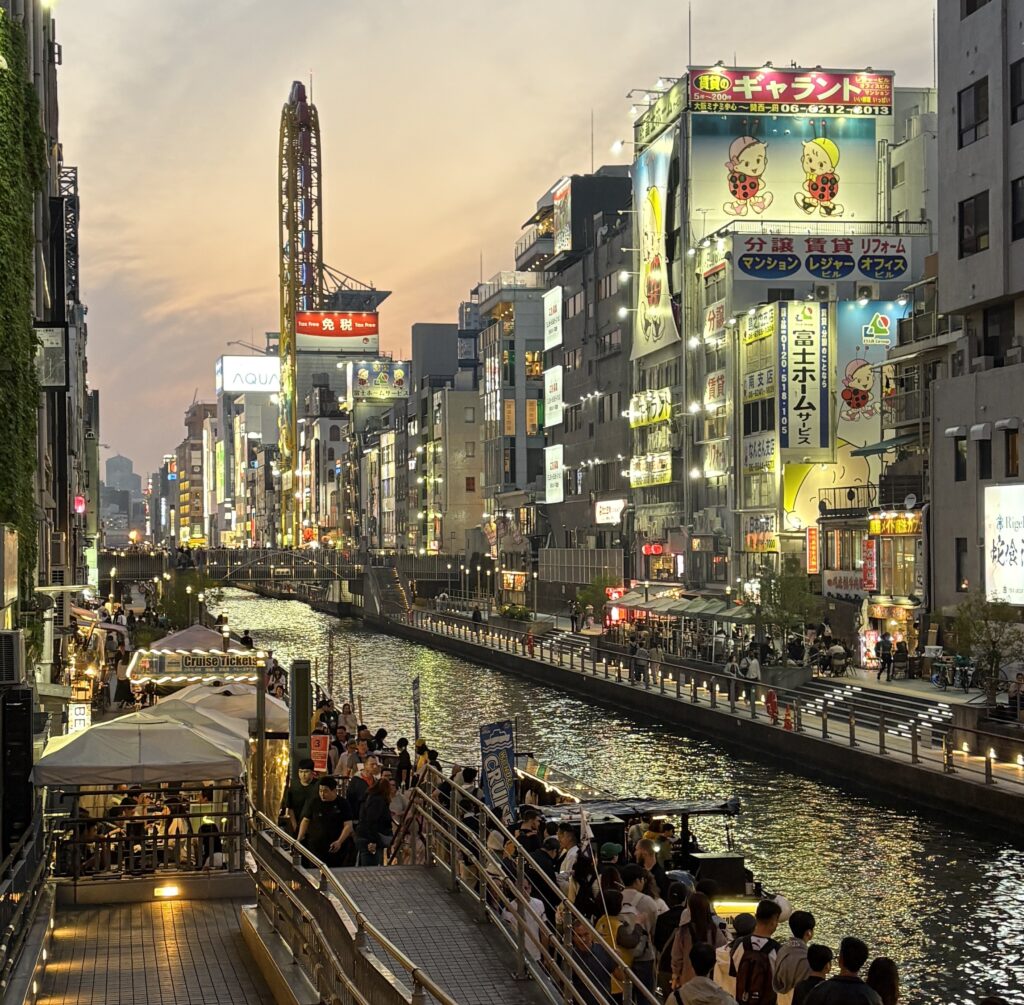
Day 1 in Osaka: Culture & Canals
Morning: Osaka Castle & Nishinomaru Garden
Start your trip strong with a dose of history and a panoramic city view. Osaka Castle is one of Japan’s most famous landmarks—and not just because it’s photogenic.
The museum inside gives you a surprisingly engaging look at samurai-era Osaka, and if you head up to the observation deck, you’ll get a full sweep of the skyline.
Right next door is Nishinomaru Garden, which you should absolutely stroll through if you’re here during cherry blossom season.
Even outside spring, it’s a peaceful space to catch your breath before diving into the energy of the city.

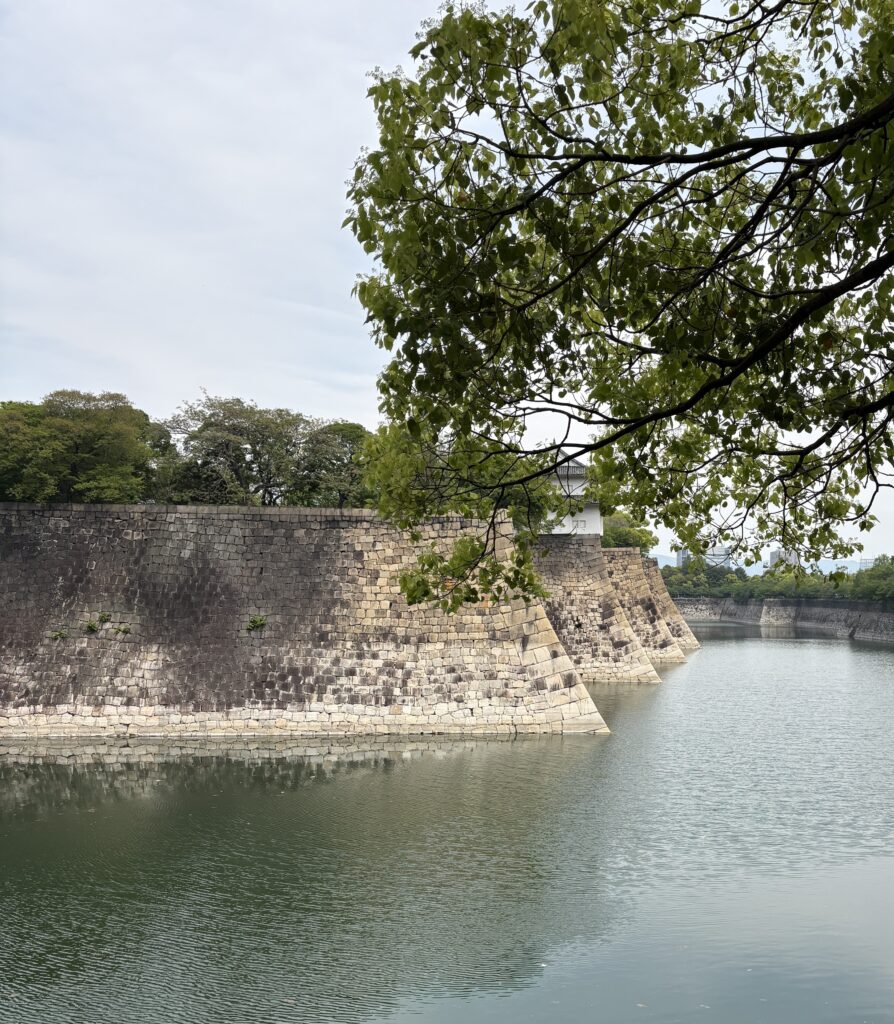
Lunch: Kuromon Ichiba Market
Let’s talk food. Kuromon Market is Osaka on a plate, or about 30 plates if you do it right.
Fresh uni, wagyu skewers, tempura, grilled scallops, and yes, some stalls offering things that will make you stop and ask, “Is that… edible?” (It usually is. Try it anyway.)
Afternoon: Dotonbori Walk
You’ve seen the neon Glico Running Man sign, even if you don’t know it yet. This canal-side district is pure sensory overload: lights flashing, takoyaki sizzling, shops blasting J-pop. It’s chaotic, unapologetically touristy, and somehow still charming.
Don’t rush it. Wander the riverwalk, pop into side alleys, and take a thousand photos you’ll pretend not to post.
Dinner: Izakaya Night in Namba
Wrap up the day with dinner at a local izakaya. I recommend Izakaya Nonkiya in Namba, laid-back, packed with flavor, and the kind of place where locals and travelers all end up drinking too much plum wine and ordering one more plate of karaage. You earned it.
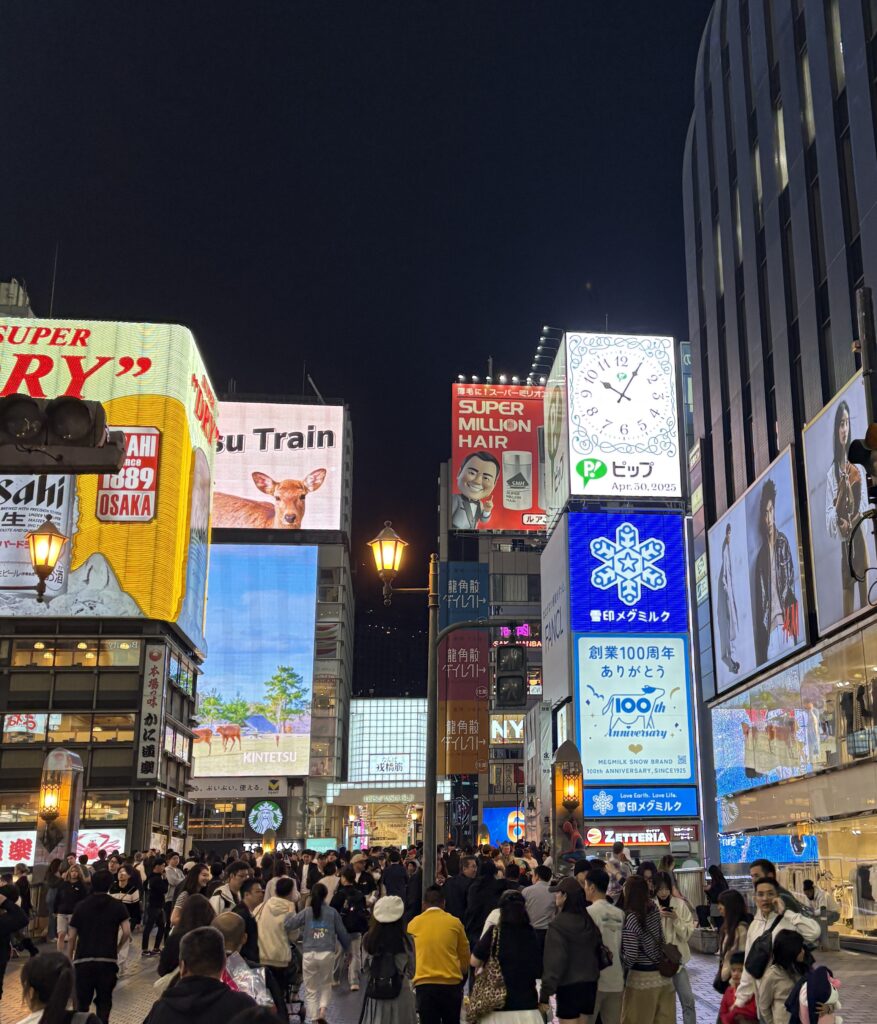
Day 2 in Osaka: Markets, Views, and Street Life
Morning: Shitennoji Temple & Namba Yasaka Shrine (Dragon Head Temple)
Start with a dose of calm at Shitennoji, Japan’s oldest officially administered Buddhist temple.
It’s not overrun with tourists, offering a slower, more authentic glimpse into spiritual Osaka. Afterward, head to Namba Yasaka Shrine, aka the Dragon Head Temple. It’s weird, it’s cool, and it’s not something you’ll see anywhere else.
Lunch: Okonomiyaki in Namba
Okonomiyaki is basically Osaka’s answer to the pancake—if pancakes were filled with pork belly, squid, noodles, and topped with a signature sweet-savory sauce.
Grab one at a classic spot like Mizuno or Ajinoya, where they sizzle them up in front of you.
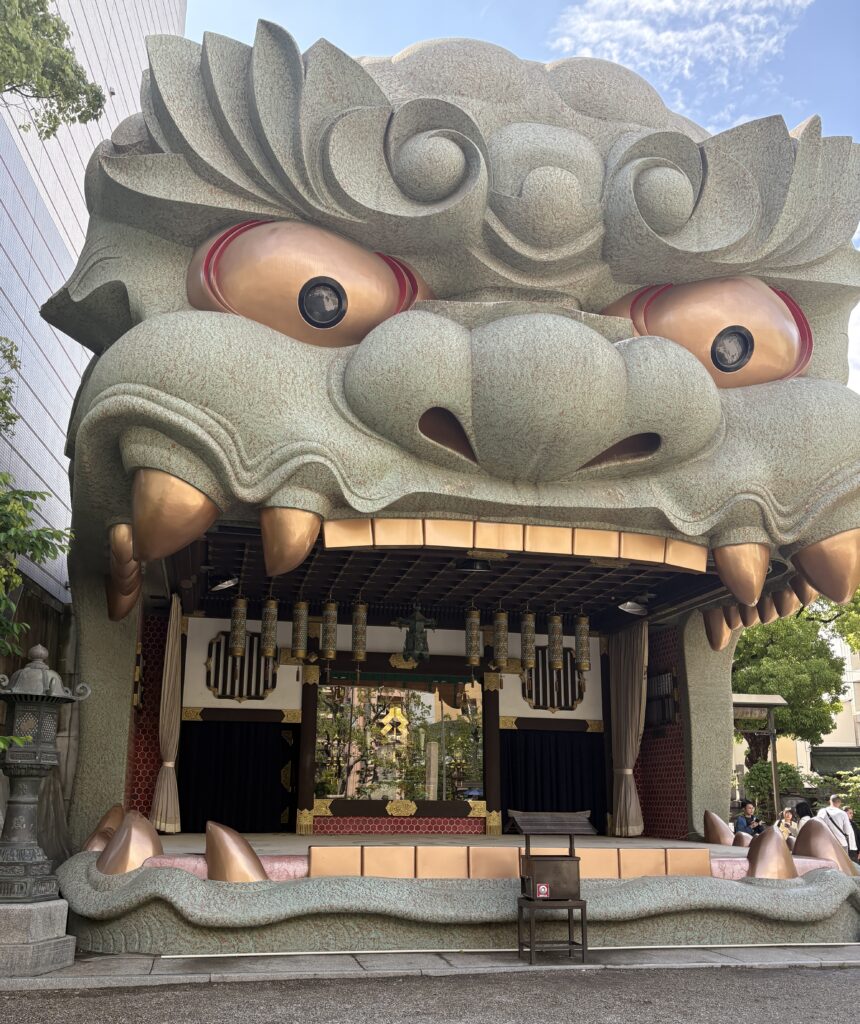
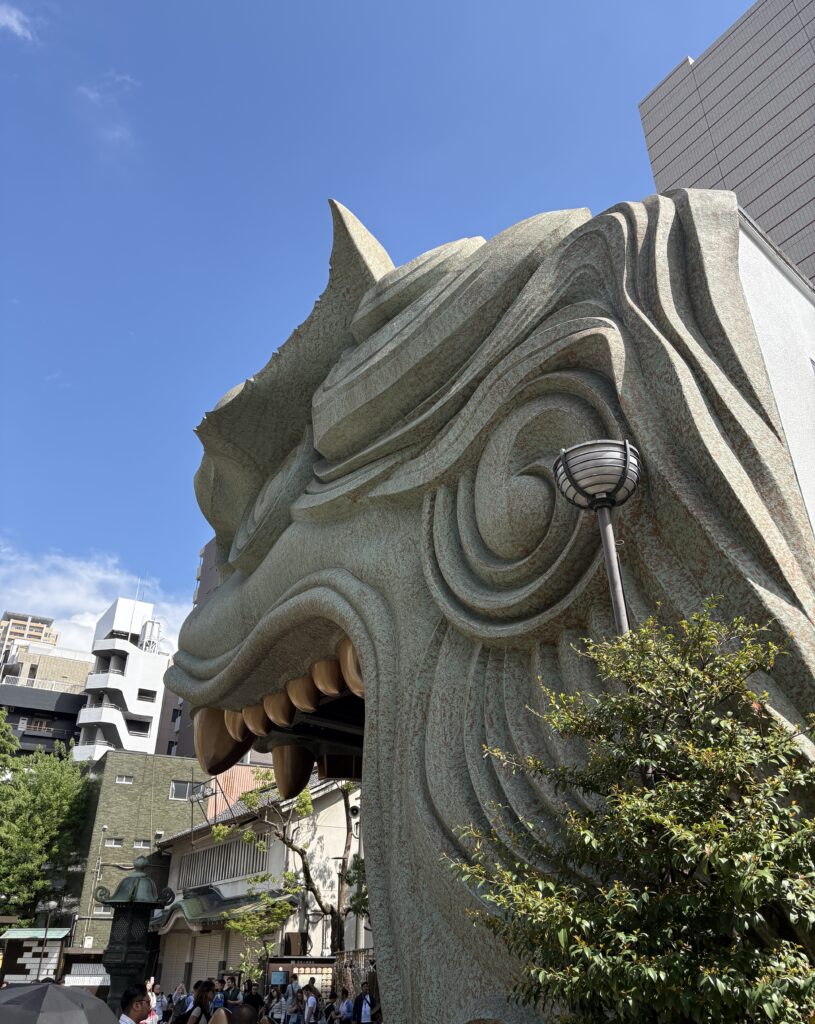
Afternoon: Shinsekai + Tsutenkaku Tower
Walk off lunch by heading to Shinsekai, Osaka’s retro, slightly grimy neighborhood that’s full of personality.
Take a photo under Tsutenkaku Tower, snack on kushikatsu, or just wander the cluttered, colorful alleys. You’ll either love it or wonder what you just walked into.
Dinner: Yakiniku Rikimaru Sennichimae
Tonight’s the night for your all-you-can-eat wagyu dream. This place isn’t just a meat fest—it’s surprisingly high-quality for the price.
Butter-soft cuts, sizzling grills, and two hours of glorious indulgence. Book ahead if you’re visiting on a weekend.
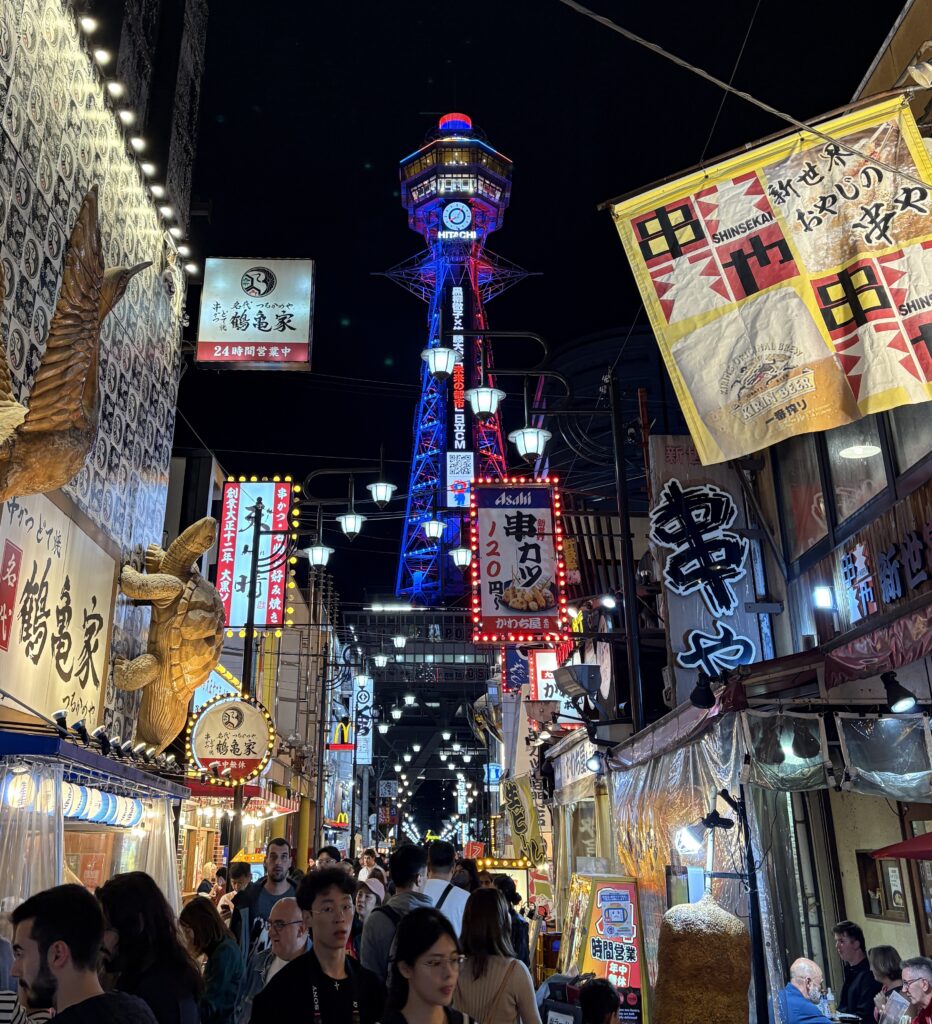
Day 3 in Osaka: Art, Tech & Views or Universal Studios
Morning: TeamLab Botanical Garden Osaka
This open-air version of the famous digital art exhibit is something else. Unlike the Tokyo or Fukuoka versions, it’s set outdoors and blends light art with nature.
Go early to beat the crowds and enjoy the serenity before the city wakes up.
Lunch: Onigiri at Onigiri Goroichan
Giant, perfectly crafted rice balls stuffed with everything from grilled salmon to mentaiko. Get there early—the line moves fast, and it’s worth it.
Grab a couple and have a quick sit-down lunch, or even a picnic if the weather’s nice.
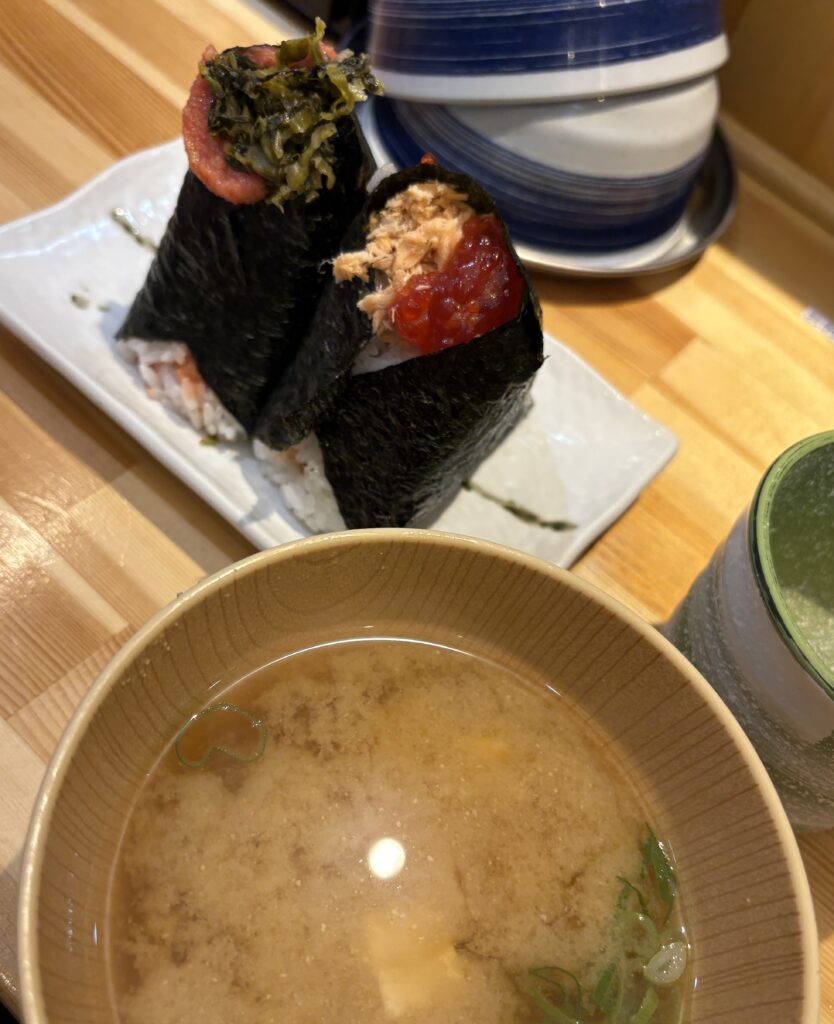
Afternoon: Tempozan Harbor Village + Osaka Aquarium
Head to the Osaka Bay area and explore Tempozan Harbor. The main attraction is the Osaka Aquarium (Kaiyukan), one of the world’s best.
Giant manta rays, deep-sea creatures, and that mesmerizing spiral tank make it worth the trip.
Evening: Tempozan Giant Ferris Wheel + Dinner Nearby
Before you leave the harbor, hop on the Ferris wheel for sweeping night views of the city and harbor.
Then grab dinner nearby—Kuma Kafe is a casual Aussie-Japanese fusion spot, or hit up a waterside sushi place for a lighter, scenic meal.
Alternative Option: Universal Studios Japan
If you’re traveling with kids, a theme park fanatic, or just want a full-day change of pace, consider dedicating Day 3 entirely to Universal Studios Japan.
From the jaw-dropping Super Nintendo World to classic attractions like The Wizarding World of Harry Potter, it’s an experience-packed day that’s absolutely worth it.
Just know you’ll need to book in advance, get there early, and plan to stay till close if you want to see it all.
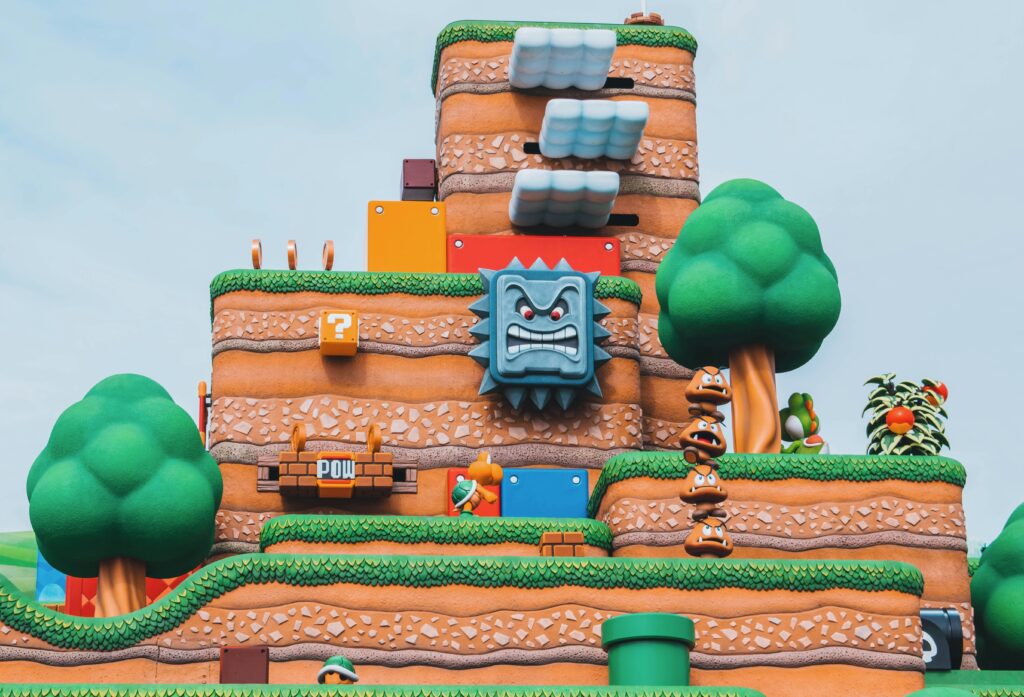
Day 4 in Osaka: Neighborhood Wandering & Wrap-Up
Morning: Nakazakicho for Artisanal Vibes
Tucked behind Umeda, Nakazakicho is Osaka’s best-kept secret if you’re into artsy streets, small cafés, and local boutiques.
It’s the opposite of the chaos from earlier days and a great way to enjoy a slower-paced morning before winding down your trip.
Lunch: Udon at Matsuya
Budget-friendly, fast, and honestly perfect. This udon spot keeps things simple, serving up bowls of chewy noodles with rich broth that’ll make you wonder why you ever paid more than ¥400 for lunch.
Afternoon: Last-Minute Shopping in Umeda or Namba
If you’ve got souvenirs or impulse buys left to make, head to the shopping hubs.
Umeda is more polished (check out Grand Front Osaka or LUCUA), while Namba keeps it loud, colorful, and full of random things you’ll somehow convince yourself you need.
Dinner: Sushi Hiro in Dotonbori
End your Osaka journey with a bang. Sushi Hiro is low-key but serves up incredible quality, especially the uni and fatty tuna. It’s walkable from the main Dotonbori strip but just far enough to escape the noise.
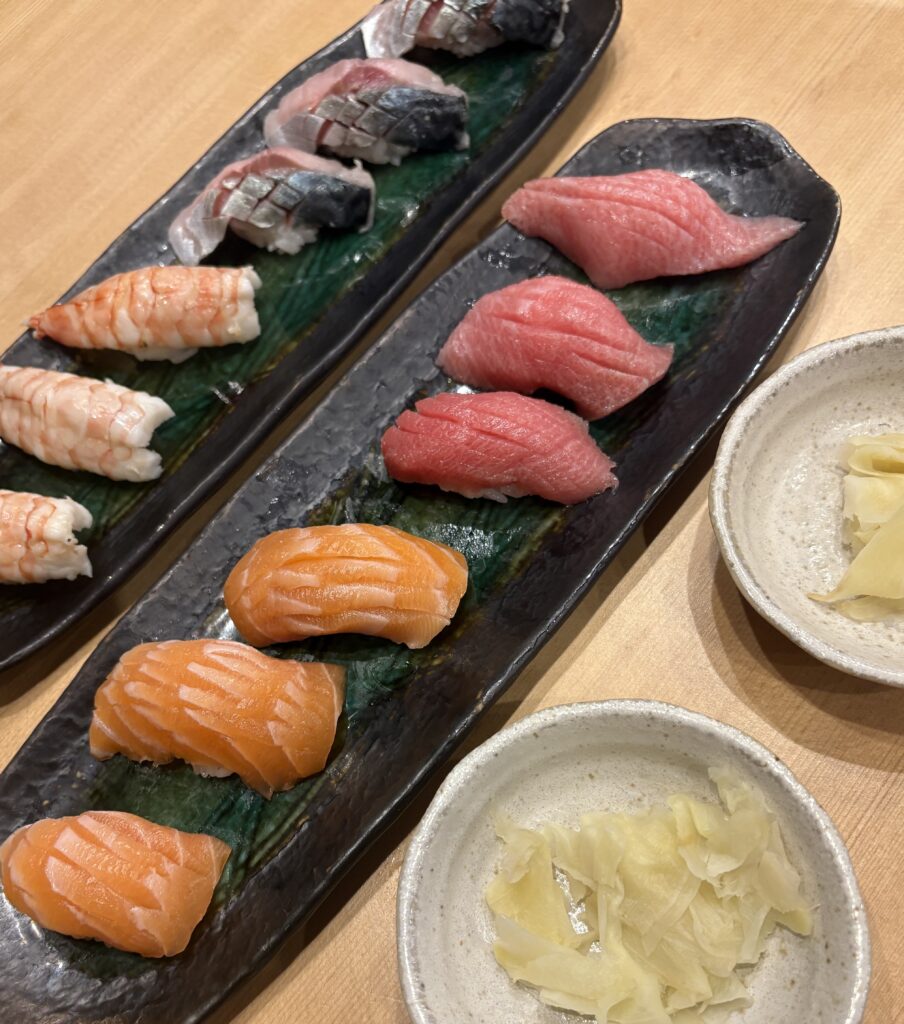
Optional Day Trips from Osaka
If you’re extending your trip, these day trips are absolutely worth your time. Thanks to Osaka’s central location and stellar train connectivity, getting to nearby cities like Kyoto, Nara, and Himeji is both fast and easy.
Whether you’re using an IC card (which you can even download on your phone) or booking a guided tour, these destinations are perfectly accessible for a one-day adventure.
- Kyoto – Temples, geisha districts, and traditional gardens. Needs a full day, maybe more.
- Nara – Famous for its friendly deer and massive Great Buddha. A half-day trip works well.
- Kobe – Come for the beef, stay for the harbor views and ropeway.
- Himeji – Arguably Japan’s most impressive original castle. Great for history lovers.
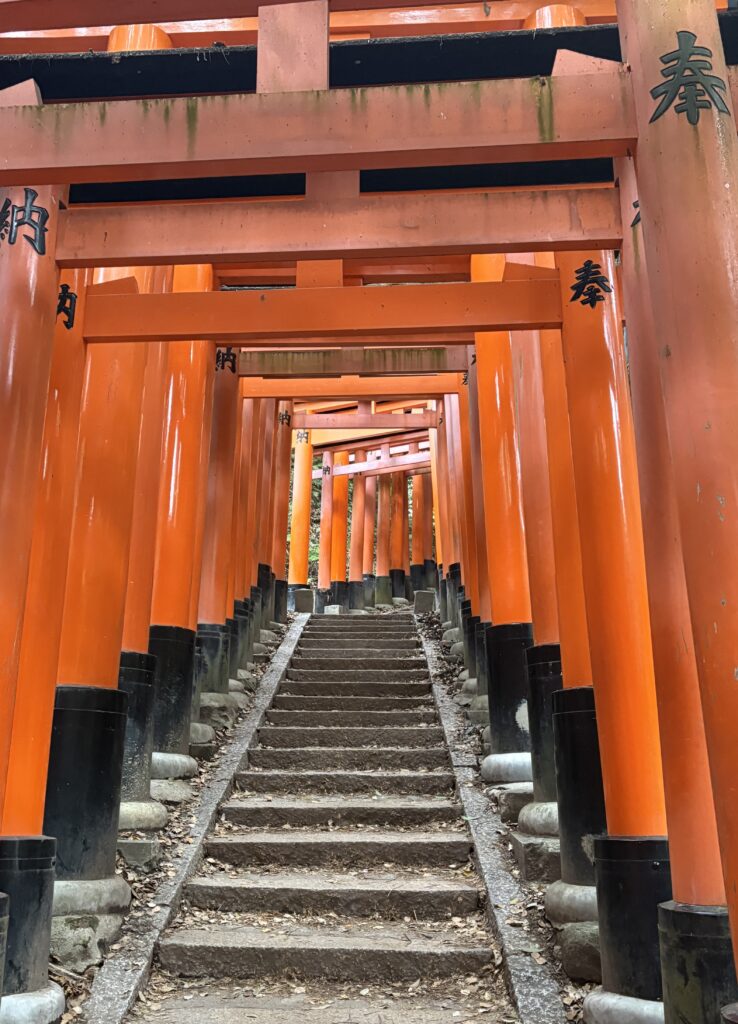
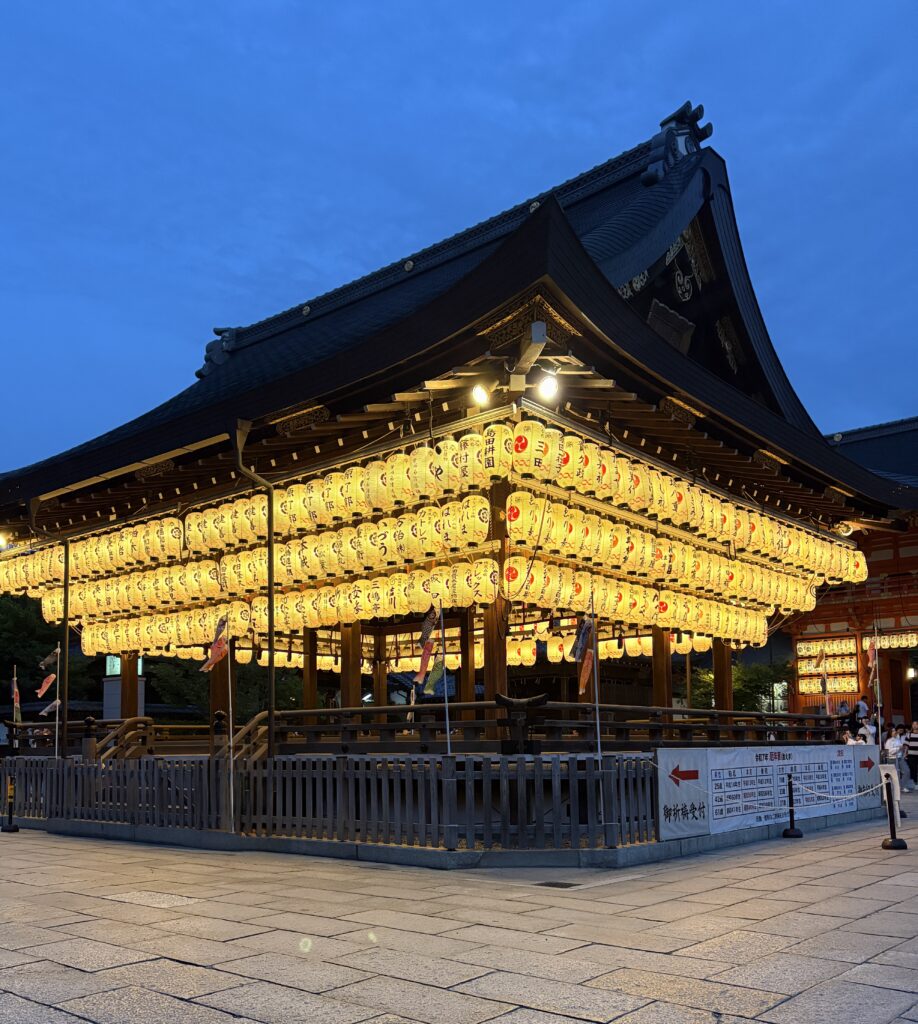
Best Neighborhoods to Stay in Osaka for First-Timers
Your neighborhood choice in Osaka will significantly shape your experience of the city.
If you want nonstop energy, neon lights, and restaurants that never seem to close, you’ll want to stay somewhere central and lively.
But if you prefer quieter mornings, a slightly slower pace, and seamless access to train stations for day trips, other areas might suit you better. Here are the top spots to consider for first-time visitors.
Namba — Osaka’s buzzing entertainment hub with shopping, food, and nightlife all within walking distance.
- Hotel Monterey Grasmere Osaka — Mid-range, spacious rooms, and sky-high breakfast views. Directly connected to JR Namba Station.
- Fraser Residence Nankai Osaka — Sleek apartment-style rooms just steps from Namba Station. Great for longer stays.
Umeda (Kita) — Business by day, sleek by night. Umeda is great for shopping and transport connections.
- Hotel Granvia Osaka — Upper mid-range. Located inside Osaka Station for unbeatable convenience.
- Hotel Hankyu Respire Osaka — Trendy, modern, and walkable to major malls and transport.
Shinsaibashi — Stylish and slightly less chaotic than Namba, but still central and connected.
- Hotel Nikko Osaka — Comfortable, upscale rooms right across from Shinsaibashi Station.
- Cross Hotel Osaka — Artsy, modern, and smack in the middle of the city’s shopping corridor.
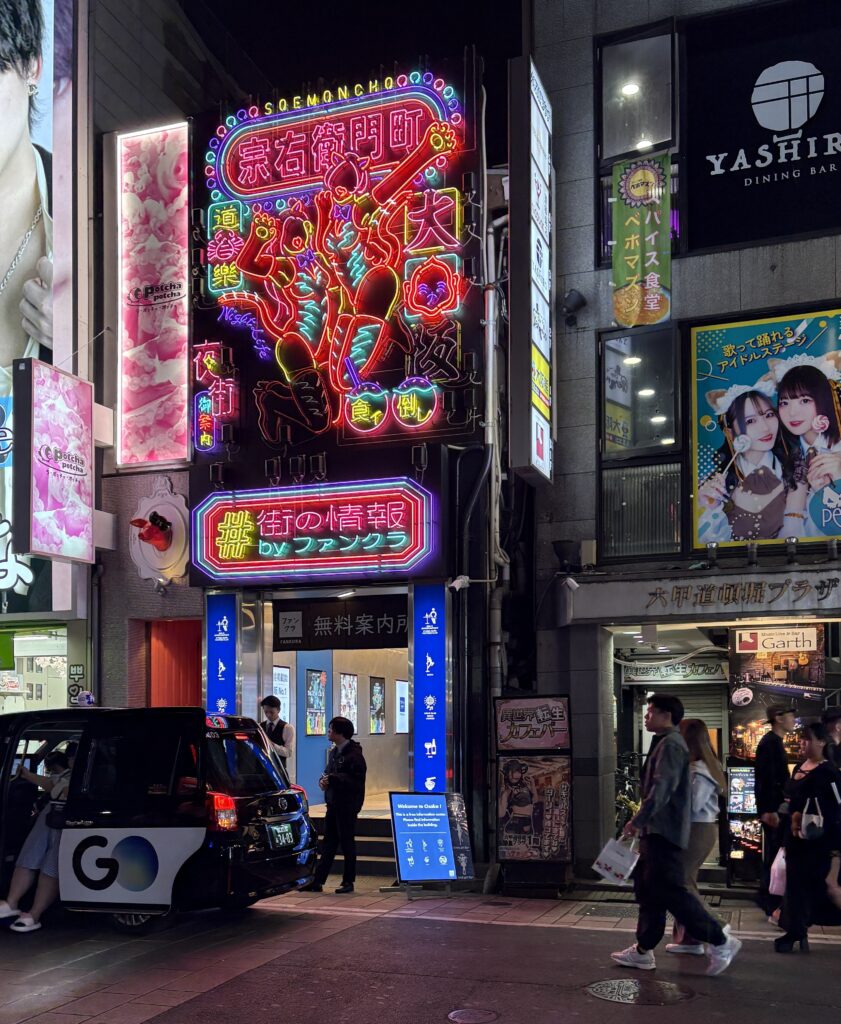
How to Get Around Osaka
Osaka is one of the easiest cities in Japan to navigate, and that’s not just travel blog talk; it genuinely is.
The train and subway systems are fast, clean, and run like clockwork, with stations and platforms so organized it makes you wonder why your home city can’t do the same.
Even if you don’t speak a word of Japanese, the signage is clear, announcements are often in English, and station maps are designed to make sense even if you’re jet-lagged and caffeine-deprived.
Whether you’re hopping neighborhoods or heading on a day trip, moving around the city is part of the fun, not a hassle.
- IC Cards (Suica, ICOCA): Tap-and-go smart cards usable across subways, buses, and trains. You can also download them to your phone (e.g., Apple Wallet for Suica).
- JR Pass: Not necessary unless you’re traveling to multiple cities. For Osaka alone, local passes like the Osaka Amazing Pass are better value.
- Subway System: Clean, efficient, and covers all major attractions. Signage is in English and easy to follow.
- Walking: Especially around Namba, Shinsaibashi, and Dotonbori, exploring on foot is often faster and more fun
- Taxis & Ride-Share: Safe but pricey. Stick to public transport unless it’s late or you’re hauling luggage.
- Trains to Nearby Cities: Kyoto, Nara, and Kobe are under an hour away. Frequent departures and easy connections make day-tripping a no-brainer
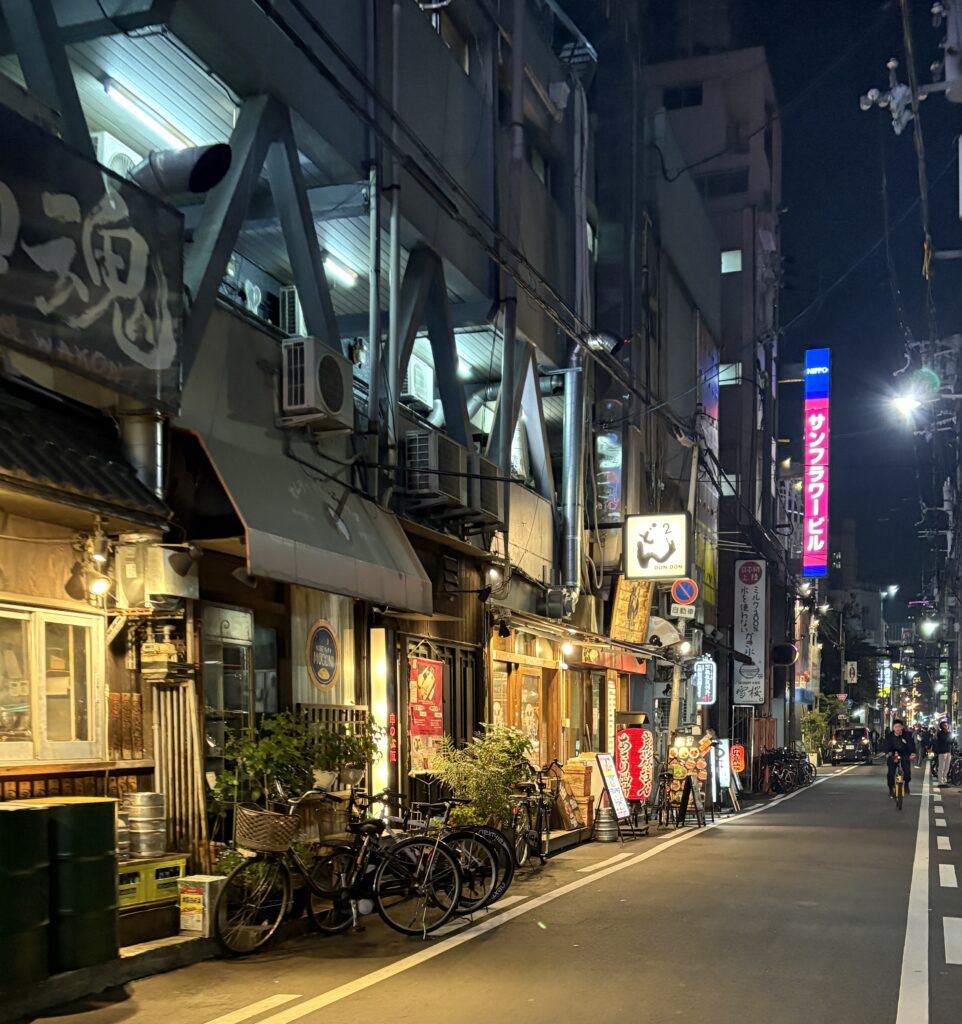
Must-Try Foods in Osaka
If you’re visiting Osaka, skipping out on the food scene would basically be a travel crime. This city is known as “Japan’s Kitchen” for a reason.
Historically a hub for the rice trade, Osaka has evolved into the country’s culinary heart, where food isn’t just nourishment, it’s a source of joy.
The city is full of lively markets like Kuromon Ichiba and Tenjinbashi-suji, where you can sample everything from fresh uni and grilled scallops to hand-torched wagyu skewers and mochi sticks.
Even better? Dining here tends to be more affordable than in Tokyo, making it the perfect place to indulge without overspending.
If you’re doing both Tokyo and Osaka on your trip, consider saving some of those bucket-list food experiences for Osaka.
You’ll often find similar or even better quality at a fraction of the cost. High-end sushi, melt-in-your-mouth wagyu, even Michelin-starred ramen, Osaka delivers big on flavor and value!
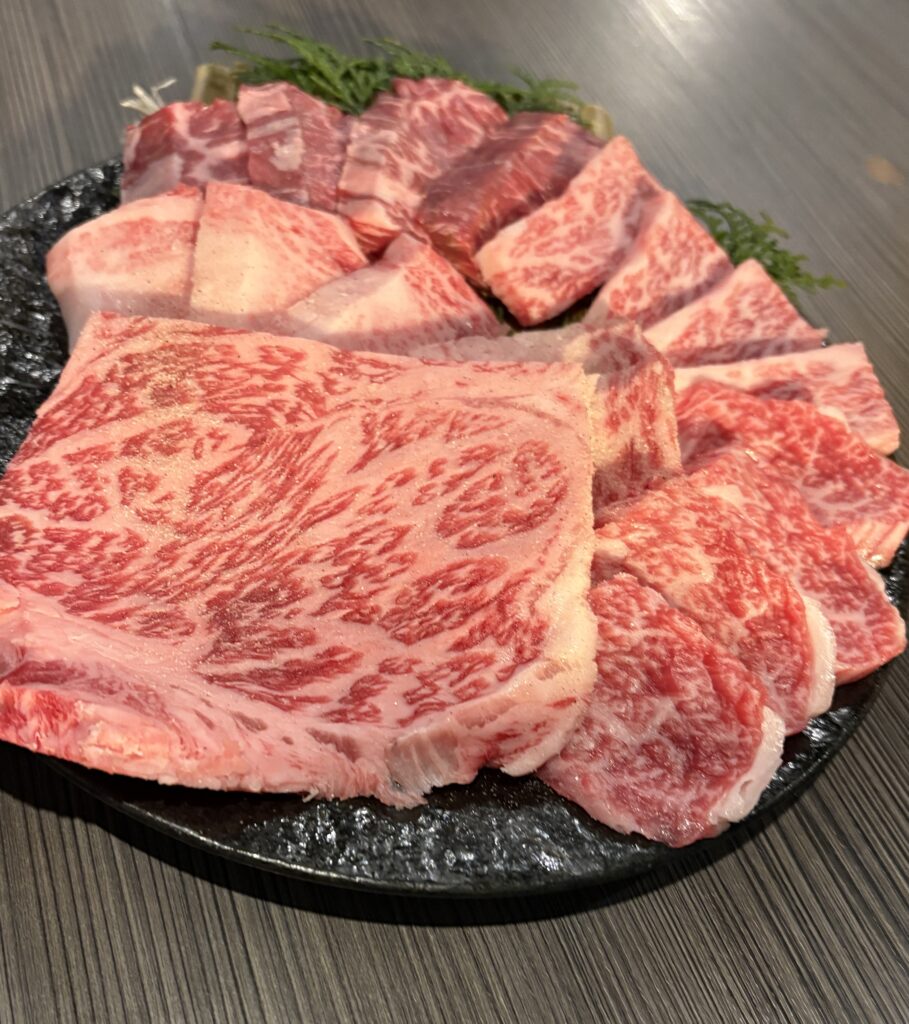
Here are 9 must-try foods in Osaka that should absolutely be on your radar:
- Takoyaki – These gooey octopus balls are the city’s signature street snack. Head to Wanaka in Namba for a crispy-outside, creamy-inside version locals swear by.
- Okonomiyaki – A savory pancake loaded with cabbage, pork, seafood, and topped with a tangy sauce. Try it at Fukutaro near Dotonbori.
- Kushikatsu – Deep-fried skewers of meat, veggies, and even cheese. Daruma in Shinsekai is the OG spot. Don’t double-dip the sauce, seriously.
- Yakiniku (Japanese BBQ) – Affordable wagyu, grilled to perfection at your table. Yakiniku Rikimaru Sennichimae hits that sweet spot of quality and price.
- Gyukatsu – Juicy steak-style beef that’s breaded and lightly grilled. Crisp outside, tender inside.
- Ramen – Rich tonkotsu broth or light soy-based versions, there’s something for everyone. Ichiran in Umeda is a tourist favorite that still lives up to the hype.
- Sushi – While Tokyo might have the fame, Osaka has the freshness. Check out Sushi Hiro for a solid, no-frills experience right in Dotonbori.
- Udon – Thick, chewy noodles in a simple dashi broth. Matsuya is my go-to spot for a quick, satisfying bowl.
- Kitsune Udon – A variation with sweet fried tofu on top. It’s especially beloved in Osaka. Try it at Dotonbori Imai for a classic version.
- Street Sweets – From taiyaki (fish-shaped red bean pastries) to freshly grilled mochi on sticks, Osaka knows how to snack. Just follow your nose.
- Japanese Curry – Thick, mildly spiced, and comforting. Osaka’s version often features fried pork or beef cutlets on top.
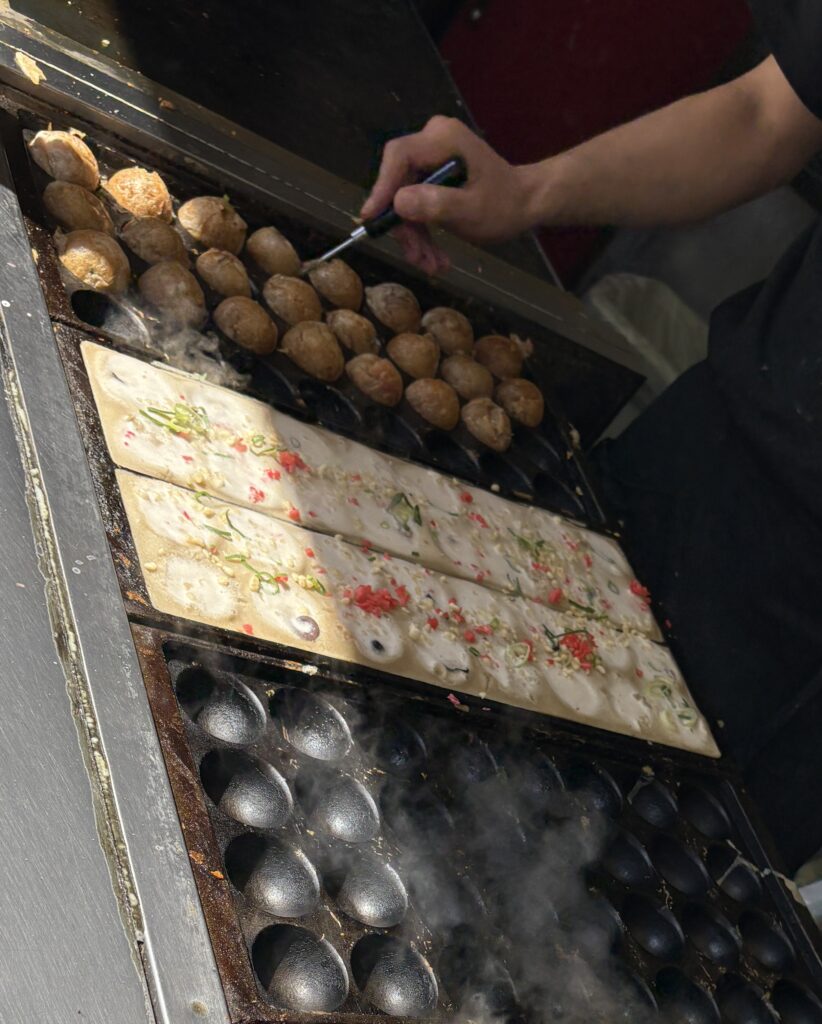
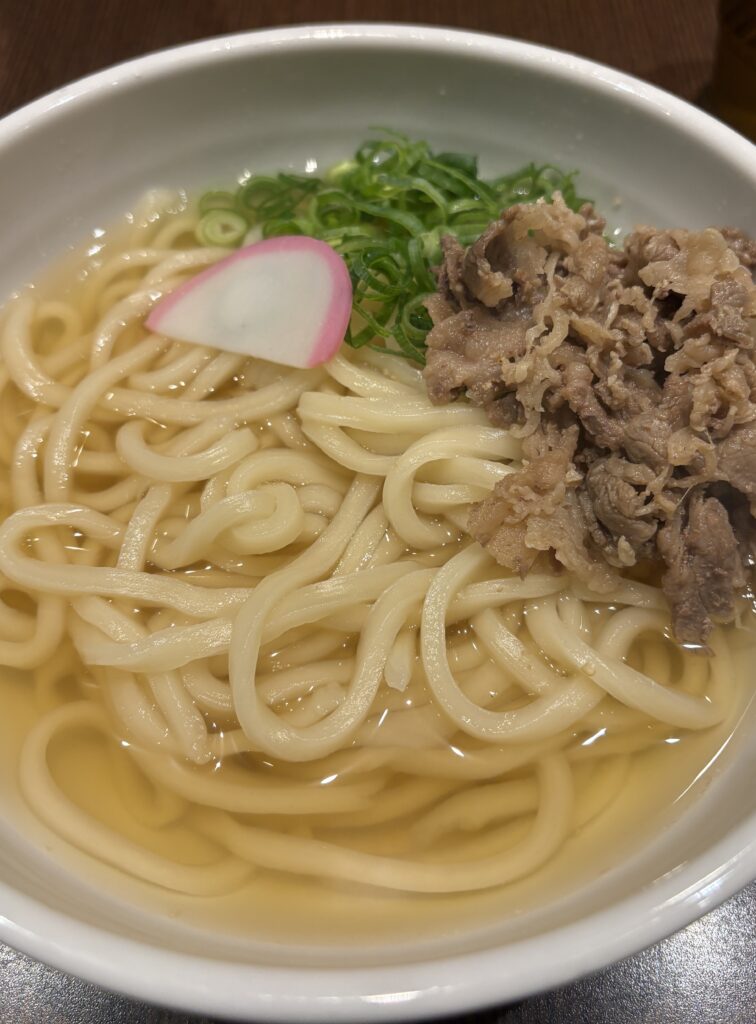
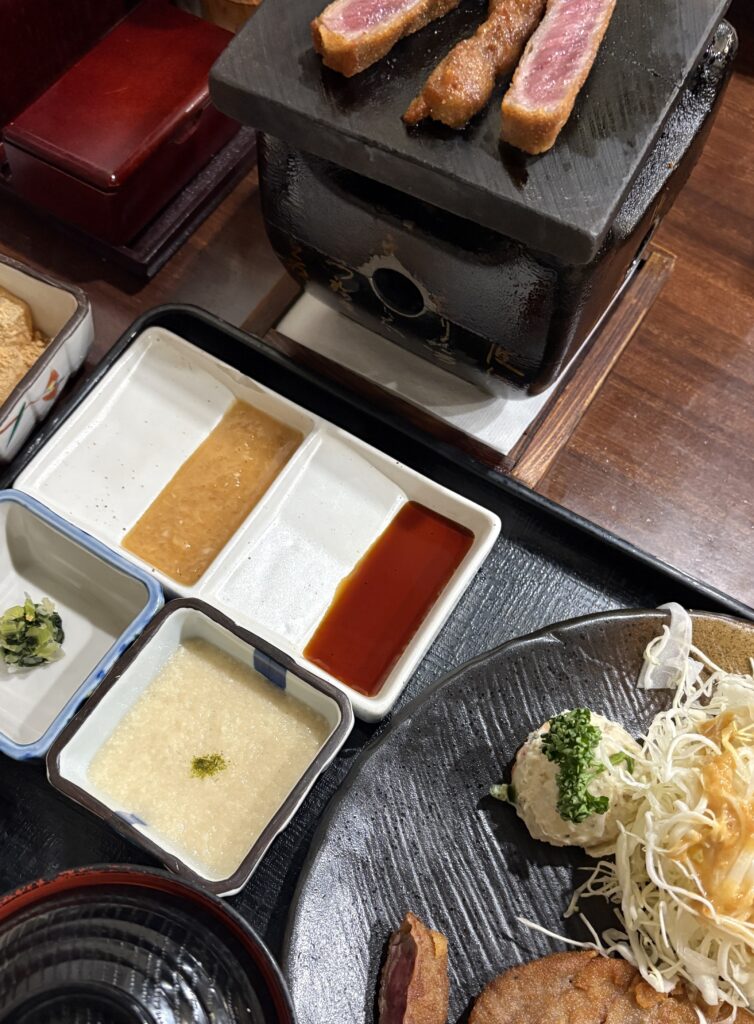
Best Time to Visit Osaka
Osaka experiences all four seasons, each offering a unique way to explore the city. From blooming cherry blossoms to warm summer nights, when you visit can shape your entire experience.
If you don’t handle humidity well, you’ll want to avoid the summer. And if icy winds and winter chill aren’t your thing, you might prefer to skip January altogether.
Spring: March to May
Spring is arguably the best time to visit Osaka, with comfortable temperatures between 12 to 22°C (54 to 72°F).
Cherry blossoms begin to bloom in late March, and the city’s parks and gardens, like Osaka Castle Park, become picture-perfect spots for hanami picnics.
This season brings a festive vibe throughout the city, and outdoor attractions are at their best. The weather is ideal for walking tours, market hopping, and day trips to Kyoto or Nara.
Summer: June to August
Summer in Osaka can be hot and humid, with temperatures ranging from 24 to 32°C (75 to 90°F).
While it’s not the most comfortable time to explore, it is one of the most exciting. Street festivals like Tenjin Matsuri take over the city, and the nightlife buzzes even harder when the sun goes down.
Pack light clothing, stay hydrated, and lean into the late-night energy; this is when Osaka’s food scene and summer fireworks shine.

Autumn: September to November
Autumn rivals spring in beauty, with cooler temperatures averaging 15 to 25°C (59 to 77°F).
The city’s parks and temple grounds explode with red, gold, and orange foliage. Osaka Castle and Minoo Park are especially scenic during this season.
It’s also a great time for food lovers, as autumn is considered harvest season in Japan. Expect special seasonal menus and fewer crowds compared to spring.
Winter: December to February
Winter in Osaka is relatively mild compared to northern Japan, with temperatures between 3 to 10°C (37 to 50°F). Snowfall is rare, but crisp blue skies make for good sightseeing days.
This is the low season for tourism, which means better hotel deals and fewer crowds.
If you’re planning day trips, you might even catch snow-dusted scenery in nearby Kyoto or Nara, without needing to trudge through deep snow yourself.
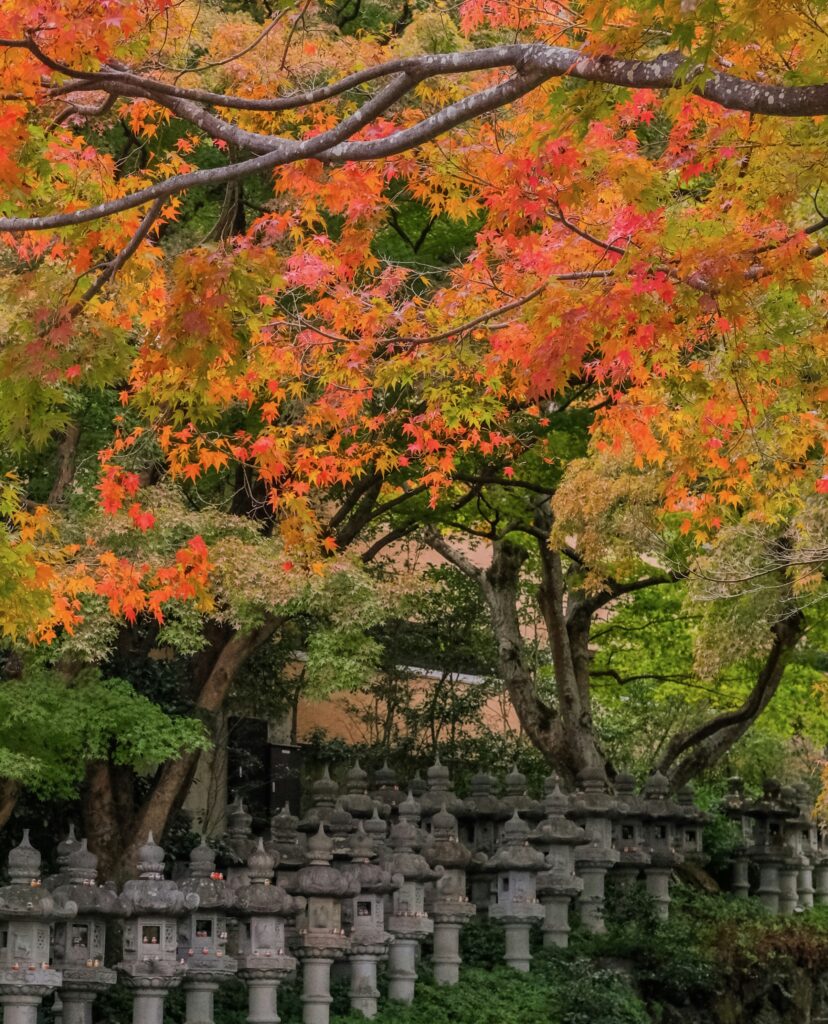
Helpful Osaka Travel Tips for First-Time Visitors
- Carry Cash – While Osaka is modern, many small restaurants and shops still prefer cash. Have yen on hand, especially in local markets or older neighborhoods. ATMs in 7-Eleven are your best friend.
- Public Trash Bins Are Rare – You’ll notice quickly there aren’t many garbage cans on the streets. Bring a small bag to carry your trash until you can find one (usually near convenience stores or stations).
- Use IC Cards for Everything – From trains to vending machines and even some restaurants, IC cards like ICOCA or Suica (downloadable on your phone) make transactions quick and easy.
- Don’t Expect English Everywhere – Many signs and menus are in English, but not all. Google Translate is super helpful, especially for menus or asking for directions.
- Mind the Escalator Etiquette – In Osaka, people stand on the right side of the escalator and pass on the left (the opposite of Tokyo). Don’t mess it up — it’s taken seriously.
- Convenience Stores Are Gold – Lawson, FamilyMart, and 7-Eleven are everywhere and offer surprisingly good food, cheap drinks, and even concert tickets or bill payments.
- Get a Pocket Wi-Fi or eSIM – Having data helps more than you think. From directions to translations and restaurant hours, you’ll need it constantly.
- Politeness Goes a Long Way – A little bow, a simple “arigatou” (thank you), or even just showing appreciation will get you far, even if you butcher the pronunciation.
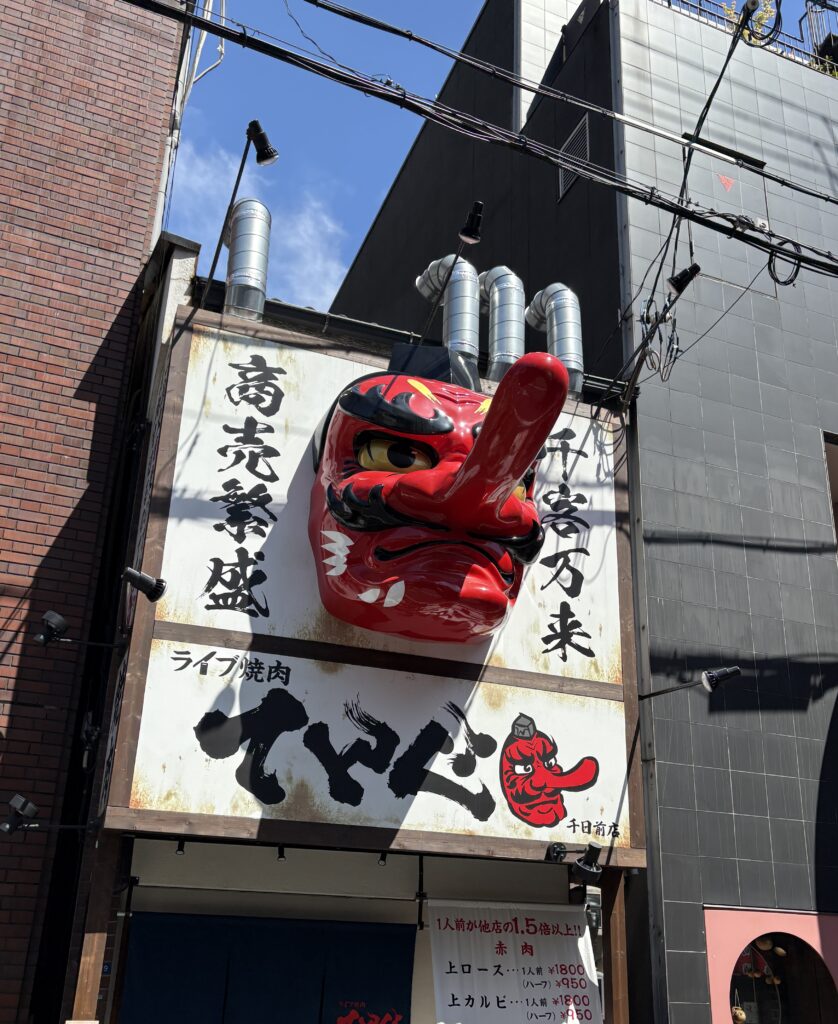
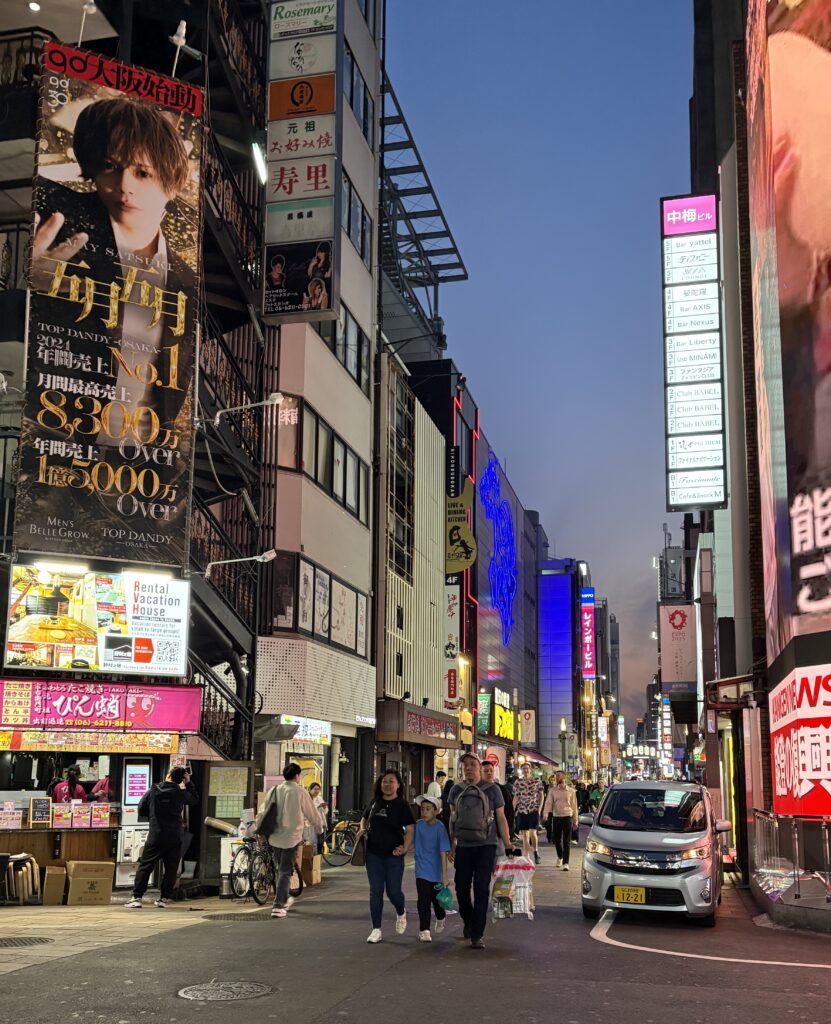
Final Thoughts After 4 Days in Osaka
So, is Osaka worth visiting? Absolutely. After spending four days exploring its streets, shrines, and sizzling food stalls, I’d say it’s not just worth visiting, it’s a must.
Osaka brings a very different flavor to a Japan trip. It’s louder, more casual, and in many ways more approachable than Tokyo or Kyoto.
It’s a place where you can eat like royalty without blowing your budget, stroll through centuries-old shrines in the morning, and wind up in a neon-lit alley eating kushikatsu by night.
Compared to Tokyo’s polished precision and fast-paced buzz, Osaka feels more grounded and human. It’s rougher around the edges in the best way, less about spectacle, more about substance.
People talk to you, laugh louder, and serve up meals that feel like they’re feeding a friend, not just a customer. It’s the kind of city that feels lived-in and real from the start.
While it holds its own, Osaka is also a key part of the “Golden Triangle” that most travelers tackle on their first trip to Japan: Tokyo, Kyoto, and Osaka.
It bridges the ultra-modern edge of Tokyo with Kyoto’s refined tradition, giving you a taste of something in between. Skipping it would mean missing out on one of Japan’s most personality-filled cities.
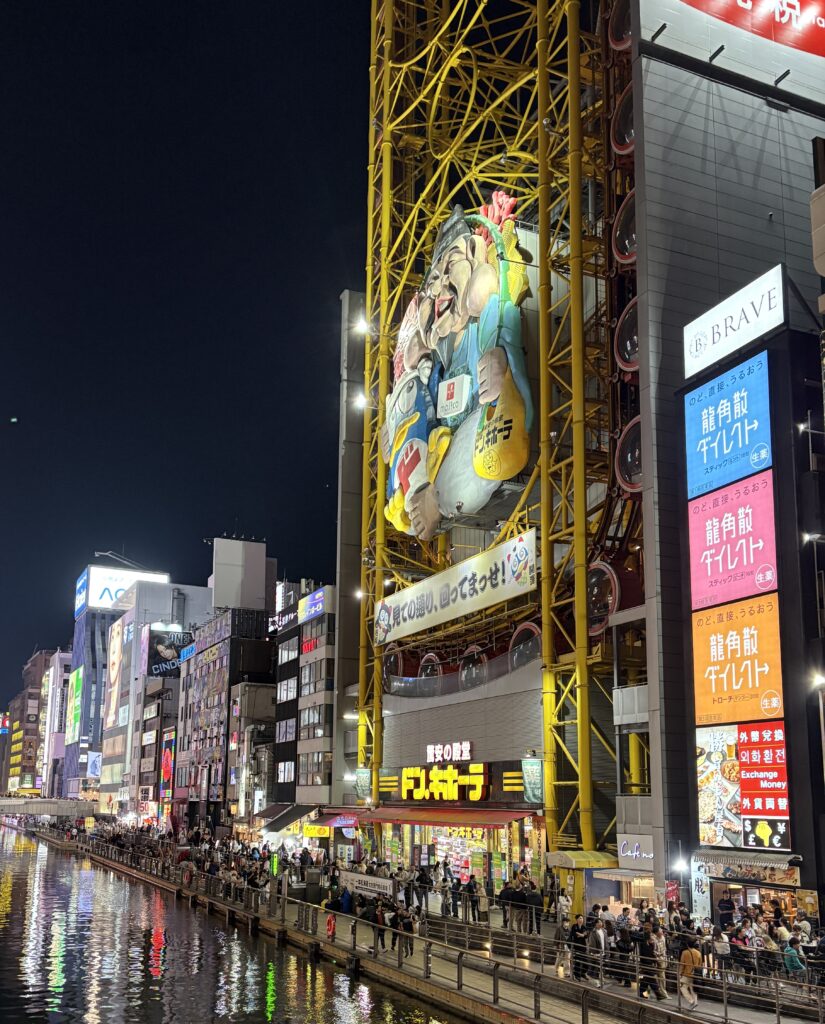
Is 4 days enough for Osaka?
Yes it is, four days give you space to hit the city’s top attractions, eat your fill of street food, and even squeeze in a day trip if you want.
It strikes the perfect balance between “did I see it all?” and “I’m burnt out,” ideal for first-time visitors.
Can I do Kyoto and Osaka in one trip?
Yes, but pacing matters. Osaka and Kyoto form part of the classic “Golden Triangle” (Tokyo–Kyoto–Osaka), and a well-planned 4‑day Osaka itinerary leaves room for a half- or full-day trip to Kyoto.
Just plug it into Day 4 or early in your schedule, and you’ll get a great taste of both worlds.
What’s the best way to get around Osaka?
Go with the city’s IC card, like ICOCA or Suica. Tap into subways, buses, vending machines, and even convenience stores.
The metro system is clean, efficient, and English-friendly—no need to overthink it.
Is Osaka worth visiting compared to Tokyo or Kyoto?
Definitely, Osaka offers a livelier, more approachable side of Japan: louder, friendlier, and unapologetically delicious.
It’s also more budget-friendly; food, hotels, and nightlife tend to cost less here compared to Tokyo. Many travelers even say Osaka is why they love Japan overall.

